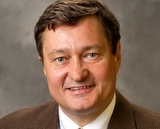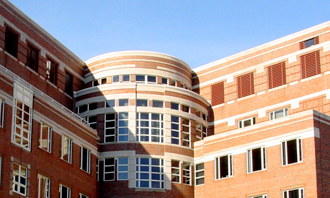Date:
Location:
Paul A. Jargowsky, Professor of Public Policy and Director, Center for Urban Research and Education (CURE), Rutgers University–Camden.
 To address the root causes of urban violence, police-community tensions, and the enduring legacy of racism, the genesis of urban slums and the forces that sustain them must be understood. The Architecture of Segregation, issued by the Century Foundation in August 2015, examines the trends in the population and characteristics of neighborhoods of extreme deprivation.
To address the root causes of urban violence, police-community tensions, and the enduring legacy of racism, the genesis of urban slums and the forces that sustain them must be understood. The Architecture of Segregation, issued by the Century Foundation in August 2015, examines the trends in the population and characteristics of neighborhoods of extreme deprivation.
Jargowsky shows that poverty has become substantially more concentrated in the U.S. since 2000, with the number of residents of high-poverty neighborhoods rising 91 percent from 7.2 to 13.8 million.
In this seminar, he will discuss these trends in the context of the policy choices that create a durable architecture of segregation in the nation’s metropolitan areas, and make suggestions on how it can be overcome.
About the speaker
Paul A. Jargowsky’s principal research interests are inequality, the geographic concentration of poverty, and residential segregation by race and class. Other areas of interest include educational attainment and economic mobility.
His book, Poverty and Place: Ghettos, Barrios, and the American City (New York: Russell Sage Foundation, 1997), is a comprehensive examination of poverty at the neighborhood level in U.S. metropolitan areas between 1970 and 1990. The Urban Affairs Association named Poverty and Place the “Best Book in Urban Affairs Published in 1997 or 1998.”
Dr. Jargowsky’s report, The Architecture of Segregation, has received considerable attention in the media and social media. (e.g., See "The Architecture of Segregation," The New York Times, Sept 5, 2015).
Jargowsky has also been involved in policy development at both the state and federal levels. In 1993, he was a Visiting Scholar at the U.S. Department of Health and Human Services where he helped design the simulation model used for welfare reform planning. In 1986, he was the Project Director for the New York State Task Force on Poverty and Welfare Reform. The report of the Task Force, The New Social Contract: Rethinking the Nature and Purpose of Public Assistance, was influential in reshaping the welfare reform debate. Jargowsky has also been involved as a consultant and expert witness in fair housing and school desegregation litigation.

